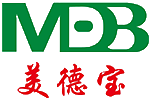-
-
Company Profile
-
Waterproof breathable membrane
Vapor barrier film
Barrier film
Reflective insulation film
Understanding the Importance of Waterproof Membranes in Construction
Release time:
2025-07-25
Understanding the Importance of Waterproof Membranes in Construction
Table of Contents
- What Are Waterproof Membranes?
- The Importance of Waterproof Membranes in Construction
- Types of Waterproof Membranes
- SBS Waterproof Membranes: A Closer Look
- Applications of Waterproof Membranes in Construction
- Key Benefits of Using Waterproof Membranes
- Installation Best Practices for Waterproof Membranes
- Common Misconceptions About Waterproof Membranes
- Frequently Asked Questions
What Are Waterproof Membranes?
Waterproof membranes are specialized barriers designed to prevent the passage of water and moisture into structures. They are typically made from materials that can withstand exposure to water while maintaining flexibility and adhesion. These membranes are essential in various construction applications, protecting buildings from water damage, mold growth, and structural deterioration.
The Importance of Waterproof Membranes in Construction
Waterproof membranes play a vital role in construction, serving as the first line of defense against moisture intrusion. Here are several reasons why their importance cannot be overstated:
1. Moisture Protection
Water infiltration can lead to significant damage over time, including rusting of metal components, rot in wooden structures, and mold development, which poses health risks. Waterproof membranes effectively seal these vulnerabilities, ensuring the integrity of the building.
2. Enhanced Durability
By using waterproof membranes, structures can withstand varying weather conditions, from heavy rainfall to extreme humidity. This durability extends the lifespan of the building materials and reduces the need for costly repairs.
3. Energy Efficiency
Moisture can adversely affect insulation performance. Properly installed waterproof membranes help maintain thermal resistance, contributing to overall energy efficiency. This can lead to lower heating and cooling costs for building occupants.
Types of Waterproof Membranes
There are several types of waterproof membranes, each suited for specific applications:
1. Sheet Membranes
These are pre-manufactured sheets that can be applied to surfaces. They provide a continuous barrier against moisture and are often used in foundations, roofs, and below-grade applications.
2. Liquid Membranes
Liquid membranes are applied as a liquid and cure to form a seamless, flexible barrier. They are ideal for irregular surfaces and complex geometries, commonly used in balconies and terraces.
3. Bentonite Membranes
Made from natural clay, bentonite membranes expand when wet, creating a self-sealing barrier. They are highly effective for below-grade waterproofing.
4. SBS Membranes
SBS (Styrene-Butadiene-Styrene) membranes are synthesized from polymers that provide superior elasticity, durability, and resistance to UV rays. They are increasingly popular in roofing and below-grade applications.
SBS Waterproof Membranes: A Closer Look
SBS membranes are known for their strength and flexibility. The unique properties of SBS provide numerous advantages:
1. Flexibility and Elasticity
SBS membranes can withstand movement and settling in buildings without cracking or tearing. This makes them suitable for applications where temperature fluctuations are common.
2. UV Resistance
Unlike traditional bituminous membranes, SBS membranes offer superior resistance to UV radiation, preventing degradation and extending the lifespan of the roofing system.
3. Ease of Installation
SBS membranes can be installed using various methods, including torch-down, self-adhered, or cold adhesive techniques. This versatility allows for efficient and effective application.
4. Compatibility with Other Materials
SBS membranes can be easily integrated with other building materials, making them suitable for various construction scenarios.
Applications of Waterproof Membranes in Construction
Waterproof membranes have a wide range of applications in the construction industry:
1. Flat and Low-Slope Roofs
SBS membranes are particularly effective for flat and low-slope roofs, where water pooling can occur.
2. Below-Grade Waterproofing
In basements and foundations, waterproof membranes protect against hydrostatic pressure and moisture intrusion.
3. Balcony and Terrace Waterproofing
Waterproof membranes ensure that balconies and terraces remain dry, preventing water damage to the structure below.
4. Green Roof Systems
When used in green roof installations, waterproof membranes support healthy plant growth while preventing water damage to the building.
Key Benefits of Using Waterproof Membranes
Utilizing waterproof membranes in construction projects offers several key benefits:
1. Cost Efficiency
Investing in waterproof membranes can save money in the long run by reducing maintenance costs and prolonging the life of the structure.
2. Improved Indoor Air Quality
By preventing moisture intrusion, waterproof membranes help maintain a healthy indoor environment free from mold and mildew.
3. Increased Property Value
Buildings constructed with effective waterproofing measures often command higher property values due to their durability and reduced risk of water damage.
4. Compliance with Building Codes
Many building codes now require the use of waterproof membranes in certain applications, ensuring compliance and safety.
Installation Best Practices for Waterproof Membranes
Proper installation is crucial for the effectiveness of waterproof membranes. Follow these best practices:
1. Surface Preparation
Ensure that surfaces are clean, dry, and free of debris before applying the membrane.
2. Overlap and Seal Joints
When using sheet membranes, ensure that overlaps are adequately sealed to prevent water infiltration.
3. Follow Manufacturer Guidelines
Always adhere to the manufacturer's instructions regarding application methods, ambient temperature, and curing times.
4. Regular Inspections
Conduct periodic inspections of installed membranes to identify potential issues early and maintain performance.
Common Misconceptions About Waterproof Membranes
Despite their importance, several misconceptions surround waterproof membranes:
1. Waterproof Means Impermeable
Many assume that waterproof membranes are entirely impermeable. While they significantly reduce moisture ingress, extreme conditions can still challenge their effectiveness.
2. All Membranes Are the Same
Not all membranes are suitable for every application. It is essential to choose the right type based on specific project requirements.
Frequently Asked Questions
1. How long do waterproof membranes last?
The lifespan of waterproof membranes varies based on the material and application but typically ranges from 10 to 30 years.
2. Can waterproof membranes be used in extreme climates?
Yes, many waterproof membranes, especially SBS membranes, are designed to withstand extreme temperature fluctuations and harsh weather conditions.
3. Are there any maintenance requirements for waterproof membranes?
Regular inspections and cleaning of debris are recommended to ensure optimal performance and longevity.
4. Can I install a waterproof membrane myself?
While DIY installation is possible, hiring a professional is recommended to ensure proper application and compliance with building codes.
5. What are the signs of a failing waterproof membrane?
Signs may include water stains, mold growth, peeling paint, and visible damage to the membrane itself. Addressing these issues promptly is crucial to prevent further damage.
Conclusion
Waterproof membranes, particularly SBS membranes, are indispensable components in modern construction, ensuring that buildings remain protected from moisture-related damage. Their benefits extend beyond mere protection, enhancing durability, energy efficiency, and overall property value. By understanding the various types of waterproof membranes and their applications, construction professionals can make informed decisions that contribute to the longevity and integrity of their projects. Prioritizing proper installation and maintenance will ensure that these crucial materials perform effectively for years to come.Previous article
recommend News
Sell one
Kelly Ho
15133606577
kelly.ho@tjmeidebao.com
Sales two
All- All
- Product Management
- News
- Introduction
- Enterprise outlets
- FAQ
- Enterprise Video
- Enterprise Atlas
Sweep the attention to us

COOKIES
Our website uses cookies and similar technologies to personalize the advertising shown to you and to help you get the best experience on our website. For more information, see our Privacy & Cookie Policy
COOKIES
Our website uses cookies and similar technologies to personalize the advertising shown to you and to help you get the best experience on our website. For more information, see our Privacy & Cookie Policy
These cookies are necessary for basic functions such as payment. Standard cookies cannot be turned off and do not store any of your information.
These cookies collect information, such as how many people are using our site or which pages are popular, to help us improve the customer experience. Turning these cookies off will mean we can't collect information to improve your experience.
These cookies enable the website to provide enhanced functionality and personalization. They may be set by us or by third-party providers whose services we have added to our pages. If you do not allow these cookies, some or all of these services may not function properly.
These cookies help us understand what you are interested in so that we can show you relevant advertising on other websites. Turning these cookies off will mean we are unable to show you any personalized advertising.
Copyright: Tianjin Medabao Technology Co., Ltd.
Business License
-


